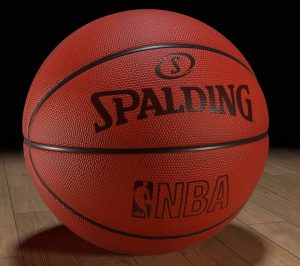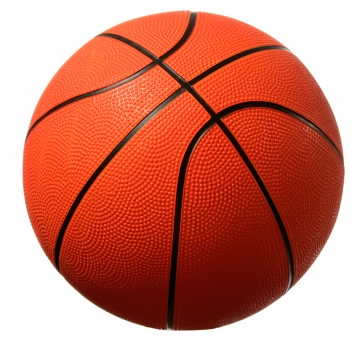 Basketball ball – a key game element in basketball and if for you a cool game matters, it is necessary to approach the choice of a ball responsibly. Now there are many firms which are releasing basketballs and at the sight of the wide range of models at everyone eyes can run up. But it is actually necessary to know not so much about a basketball to feel confident upon its purchase.
Basketball ball – a key game element in basketball and if for you a cool game matters, it is necessary to approach the choice of a ball responsibly. Now there are many firms which are releasing basketballs and at the sight of the wide range of models at everyone eyes can run up. But it is actually necessary to know not so much about a basketball to feel confident upon its purchase.
All basketballs are divided into two categories suitable to certain conditions for playing basketball:
- Basketballs for use, as on the street, and indoors. On such balls, it is often possible to see an inscription (indoor/outdoor).
- Basketballs only for use in hall courts inside (indoor use only). Such balls it is impossible to play on the street it is not recommended as they are made of “soft” materials, so, quickly wear out and blows about asphalt.
Skilled players recommend to get instead of the universal ball suitable for a game in all conditions, to buy two separate: for indoors game, and for game on the street. The basketballs intended for a game on the street (outdoor) are made of rubber, and therefore cost cheaper than any other basketballs and are in practice very durable. In turn, the balls marked by the English word (indoor) most of all are suitable for indoor games.
Besides, all balls are divided by the sizes. Men’s teams use basketballs, weighing 567-650 grams, with a circle about 750-780 cm. Women’s teams use balls of the smaller size.
Four sizes of basketballs
- No. 7 – “Adult” balls. Their size – on circle length – 760 mm. Such balls play men’s basketball teams.
- No. 6 – “Female” balls. The size – about 730 mm. These balls women and young men up to 16 years play.
- No. 5 – “Children’s” balls. The size of these balls – about 700 mm. on a circle. These balls are recommended for children’s teams up to 16 years.
- No. 3 – absolutely Small ball, its dimension about 570 mm. It is already rather a souvenir, but not a basketball. But quite will suit little children.
It’s just a recommendation and there is way more information about basketball sizes as every coach and sport doctors has unique positions.
Production material
In many respects quality of a basketball, depends on from what material it is made. The most widespread materials which are used by production of basketballs are:
1. Rubber
Products from rubber best of all are suitable for a game on the street. Rubber basketballs has a demand in most countries because it’s the cheapest balls available, often made by large companies like Mikasa and leaders: Spalding, Nike, Wilson and others, but that’s not all, as many Chinese businesses are manufacturing them because of cheap material and ease of production. As for quality, such ball enough in short terms will become useless.
2. Synthetic skin
Products from synthetic skin, however and much more expensively will be far more qualitative. Synthetic skin is a hi-tech and high-grade product. This product imitates a skin structure, superthin fiber and high-grade polyurethane is applied to its production, produced on new technology. It gives the chance not to lose property of genuine leather to pass air and resistance to deformation. The basketball from synthetic skin serves long enough and is suitable for a game, both on the street, and in the hall.
3. Composite skin
Balls from composite skin are considered as even more qualitative. Composite skin is made from scraps of skin and tanning fibers by pressing or “pasting”, it belongs to natural materials and does not contain synthetics. Balls from such skin soft to the touch are also intended for a game only on a wooden or rubber courts. Such basketball attribute, not much more is of a lower quality than the products made from genuine leather.
4. Genuine leather
The strongest are products from natural skin. Such basketballs are used absolutely at all professional competitions. Are suitable for a game only in gyms. The best ones are made by Baden and most professionals recommend Baden ball called Elite If you see products with marking of Indoor use only or supreme leather, then know that before you a basketball by which production quality skin was used.
Why the basketball has to be orange?
 There are various opinions. We offer you one of versions: Up to the middle of the 50th years of the 20th century balls were dark brown. But in 1957 made changes to rules and obliged commands to play balls of natural yellowy-brown color, or purely yellow color. Such situation did not suit the coach of Butler University Tony Hinkle. He wanted that the ball was more noticeable, both to players, and the audience. Therefore, he started working and in 1958 together with the Spalding company released an orange ball which was tested right there in the final of student’s league NCAA. Probably the new ball attracted all and the next year orange color was added to the rules of basketball!
There are various opinions. We offer you one of versions: Up to the middle of the 50th years of the 20th century balls were dark brown. But in 1957 made changes to rules and obliged commands to play balls of natural yellowy-brown color, or purely yellow color. Such situation did not suit the coach of Butler University Tony Hinkle. He wanted that the ball was more noticeable, both to players, and the audience. Therefore, he started working and in 1958 together with the Spalding company released an orange ball which was tested right there in the final of student’s league NCAA. Probably the new ball attracted all and the next year orange color was added to the rules of basketball!
But” everything flows and everything changes …” and already producers of basketballs began to release violet, black and other styles – the most different basketballs!
